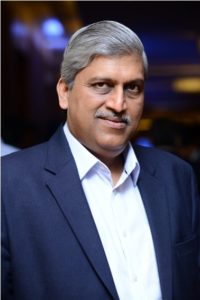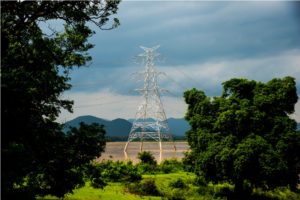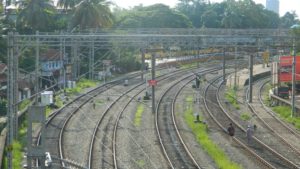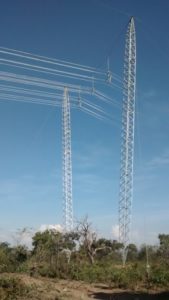
KEC is a global infrastructure major with a traditional presence in power transmission and distribution. In this exclusive interaction, we have Vimal Kejriwal discussing how KEC International, is diversifying from its core strength of power T&D and moving into related areas like railways, civil construction, renewables (mainly solar) and even water management. Kejriwal, while discussing industry-related issues, observes that there are positive changes in the tendering procedures of government power utilities. An interaction by Venugopal Pillai.
Over the recent years, KEC has been moving into areas like solar, railway electrification and even water. We perceive that this makes KEC an “infrastructure” EPC company and not just a “power transmission” EPC company. Please discuss.
Leveraging on our core strength—power T&D that accounts for almost 82 per cent of the company’s business—we have strategically expanded our operations into adjacencies and unlocked new sources of growth by diversifying our business portfolio.
We have significantly expanded our substation business in both the domestic and international arena, on the air insulated substation (AIS) and gas insulated substation (GIS) front. The business today, accounts for more than 10 per cent of our overall revenue.

We have been in the railway electrification business for over five decades now. However, it is only recently that the pace of electrification has picked up significantly and it is slowly becoming a substantial part of our portfolio. We have expanded our portfolio beyond electrification to include composite railway projects related to civil works, track laying, building railway stations, tunnels and bridges and electrification & signaling work, to become an integrated player.
About two years ago, we expanded into the solar EPC space. We have successfully commissioned more than 100 mw of solar power projects, including around 67 mw on single axis tracking, which makes us one of the largest EPC players with single axis tracking experience. Currently, we are working on expanding this business internationally.
We ventured into the water business a few years ago, and have executed several projects on integrated water & waste water/sewage treatment and water resource management.
At KEC, apart from diversifying the business operations, we have often chosen to opt for inorganic growth to diversify our portfolio. A few years ago, we acquired US based, SAE Towers Holdings LLC, the largest producer of steel lattice towers for high-voltage power transmission in the Americas. Today, our global tower manufacturing capacity has increased to 3,13,200 tonnes per year, and we have one of the largest operating capacities, globally.
What is your outlook especially on the solar sector, given the huge government impetus?
In the last two years, our solar revenue has doubled, and we continue to double it again this year. We have built significant capabilities in the domestic market and are well poised to tap the emerging opportunities in the solar EPC space. Today, our order book in the solar business is more than Rs.400 crore.
The Indian solar market is growing at a rapid pace, fueled by certain policy developments, initiatives and investments that are in the pipeline by the government. The National Solar Mission (NSM) targets the installation of 100 GW by 2022, of which ground-mount comprises 60 GW and the rest 40 GW is attributed to rooftop projects. The planned capacity of solar parks has also doubled from 20GW to 40GW as announced during FY 2017-18 Union Budget.
Certain positives decoded in the Budget augur well for the industry, such as an increase in MNRE allocation from Rs.5,036 crore to Rs.5,473 crore, of which 74 per cent is directed towards grid-interactive renewables, emphasis on developing Phase-2 of solar parks (20 GW) with an additional 20 GW capacity, reduction in duty for solar equipment towards making India more competitive, enabling solar power at 7,000 railway stations, etc. Solar parks and ultra mega solar power projects will be set up by 2019-20, with financial support of Rs.8,100 crore from the Central government.
What impact do you see GST having on the solar industry?
However, the industry is currently witnessing a slowdown due to volatility on several counts. GST roll out has resulted in uncertainties pertaining to the duty structure applicable to this industry. Module prices are witnessing a firming up, for the first time in the last few years, impacting projects which were won factoring in aggressive forward calls. PPAs, which were signed at high rates are currently being renegotiated leading to an element of ‘retrospective uncertainty’ in the minds of investors, making them cautious. Even if renewable power offtake is happening at agreed PPAs, cash flow continues to be a problem due to financial health of Discoms. Given the uncertainty and volatility, new project developments may get pushed back by a few months. Considering our huge international spread in our T&D business, we have also been looking at opportunities in the overseas market and are clearly seeing some very promising areas.
Railway electrification is also expected to attract major investments. How do you see opportunities in future?

Yes, the outlook for the railway industry is very positive and the sector is on a rapid growth path. The Indian government has set forth plans for network expansion, as well as upgradation and modernisation of the existing infrastructure. The FY18 Railway budget unveiled several opportunities—including an increase in capital outlay from Rs.1.21 lakh crore to Rs.1.31 lakh crore, electrification of 6,000 km of tracks, commissioning of 9.5 km of broad gauge lines per day, etc—for players like us.
We are seeing significant capital outlay in KEC’s core areas of operations, including electrification, track renewals, construction of new lines, gauge conversion and doubling. Over the last few years, we have expanded our client base to include several railway electrification works for CORE, RVNL, IRCON and PGCIL. We are currently looking at relevant opportunities in DFCCIL projects and the international sector, with a view to expand our business operations.
KEC’s order backlog in the railway business as on June 30, 2017 was over Rs.1,300 crore.
Returning to your traditional business of EPC in power transmission, we observe that KEC has been tapping newer geographies, especially in Africa and the Americas. Tell us more. Are there regions/countries where KEC would like to mark its first presence or expand its presence?

KEC has a vast footprint in 63 countries, and is currently executing projects in 37 of these. As part of the growth plan for FY20, we continue to strategically expand our operations via geographical expansions. In FY17, we successfully entered or re-entered eight new countries including, Senegal, Tanzania and Thailand. We were successful in rebalancing our Middle East portfolio with order wins in Oman, Jordan and Egypt. The pie of our international substation business is growing significantly.
We are strengthening our presence in the East Asia Pacific region. In SAARC, we are witnessing good momentum, and are seeing new opportunities in regional interlinking projects.
Leveraging our core strength, we have expanded our strong global EPC expertise in the Americas, through our wholly-owned subsidiary SAE Towers. Since our foray, we have secured eight EPC projects in Brazil.
The power transmission sector in India offers opportunities for contractors to turn into developers under the TBCB route for both interstate and intrastate lines. Is KEC keen on exploring opportunities?
The government is investing significant efforts to attract private players to participate in the bidding process through the tariff based competitive bidding mechanism, thus enabling a level-playing field for all.
However, for this to become more attractive, there is need for focused approach towards policy reformation to expedite and eradicate execution and procedural bottlenecks such as support and solution of RoW problems and issues related to bidding, reduction of time gap between bidding and the award of order, etc.
KEC has been looking at TBCB in a very selective manner and we are currently executing one project in this route. We are doing EPC for all the large TBCB players and want to continue to focus on our strengths, and are not looking to divert our capital into TBCB presently. The other major attraction for doing EPC for TBCB players is that since the developers are private, most of the EPC contracts are on negotiation basis, where quality players like us are given preference.
KEC has closely worked with Central and state power utilities. Do you see any change, in recent times, in the way tendering and procurement are being handled?
Certain changes have manifested in the tendering and procurement process in recent times, which have led to a smoother and efficient process for all parties involved. Deal closure is quicker, with a reduction in time gap, right from bidding stage to award of order in both Central and certain state government entities. Majority of the SEBs have adopted online bidding process, which has resulted in faster communication/sharing of documents, in addition to standardisation of specifications, resulting in lesser documentation required.
What was KEC International’s overall order inflow in FY17 and how do you view your performance in FY18 so far?
During FY17, our overall order intake increased by 42 per cent, year-on-year. As a result, our order book grew by 35 per cent and closed at Rs.12,631 crore. We delivered significant improvement in margins for the year. In our order intake in FY17, international business accounted for 54 per cent and for domestic business, 46 per cent.
During Q1FY18, we have seen significant traction on order booking in our domestic business. Combined with the substantial International orders received in H2 FY17, we have a fairly balanced and robust order book and a strong L1 pipeline for FY18.


